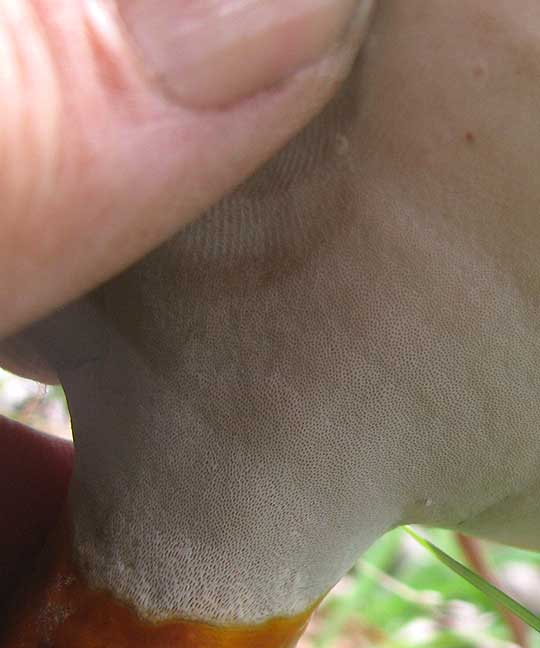Excerpts from Jim Conrad's
Naturalist Newsletter
from the May 20, 2012 Newsletter issued from the woods of the Loess Hill Region a few miles east of Natchez, Mississippi, USA
REISHI MUSHROOMS UP!
Too tough to be edible but very interesting and pretty nonetheless are the Reishi Mushrooms coming up in the orchard area. One is shown below:

In much of the world this species is known by its Japanese name, Reishi. It's GANODERMA REISHI, about three inches tall (8cm). You can see that it doesn't have the usual "mushroom shape" with the stem connecting with the cap in the cap's center below, but rather attaches at the side. Some "shelf fungi," usually found on wood, attach to the side like that but their stems aren't nearly as well developed as this one's. This is truly an oddly shaped mushroom. It's a young one, too; as it matures its white cap will turn dark reddish-brown and become shiny as if shellacked.
Reishi mushrooms are not gilled, but rather drop their spores from tiny pores on the cap's undersurface. You can see the pores on a cap turned back with my thumb below:

This isn't the most famous Reishi, often sold in the medical industry. That's the Eurasian Ganoderma lucidum. This is Gnaderma curtisii, a southwestern US species.
The Japanese name Reishi literally means "supernatural mushroom." Way back, the goddess Reishi Senshi was worshiped because she would bestow health, life and eternal youth. Reishi mushrooms are considered to be good for just about any ailment. In fact, studies in the West have found that Reishi extract does act on immune system cells, works against herpes virus, lowers cholesterol and stops cell proliferation -- at least in mice and rats. So far Western medicine hasn't conclusively found any benefit of Reishi for humans.